 |
Building intermittent breaks into the workday is not only counterintuitive, it’s also countercultural in the vast majority of organizations.
|
069 |
 |
…treat employees like adults by giving them freedom to decide how best to get their work done and hold them accountable for their results, not the hours they work.
|
108 |
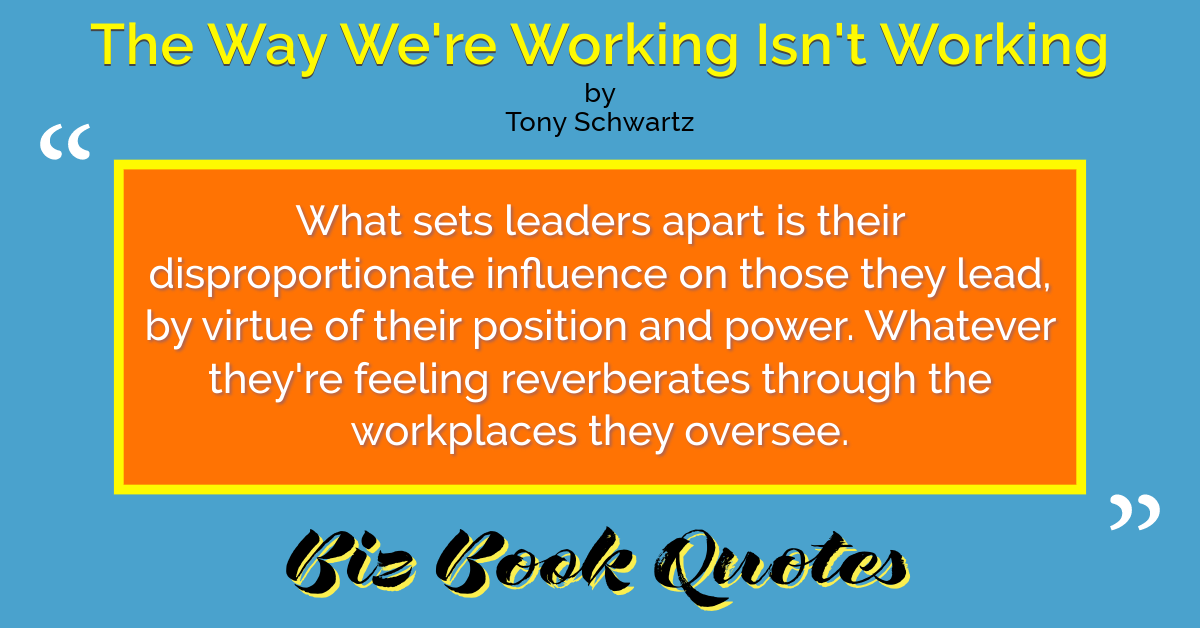 |
What sets leaders apart is their disproportionate influence on those they lead, by virtue of their position and power. Whatever they’re feeling reverberates through the workplaces they oversee.
|
129 |
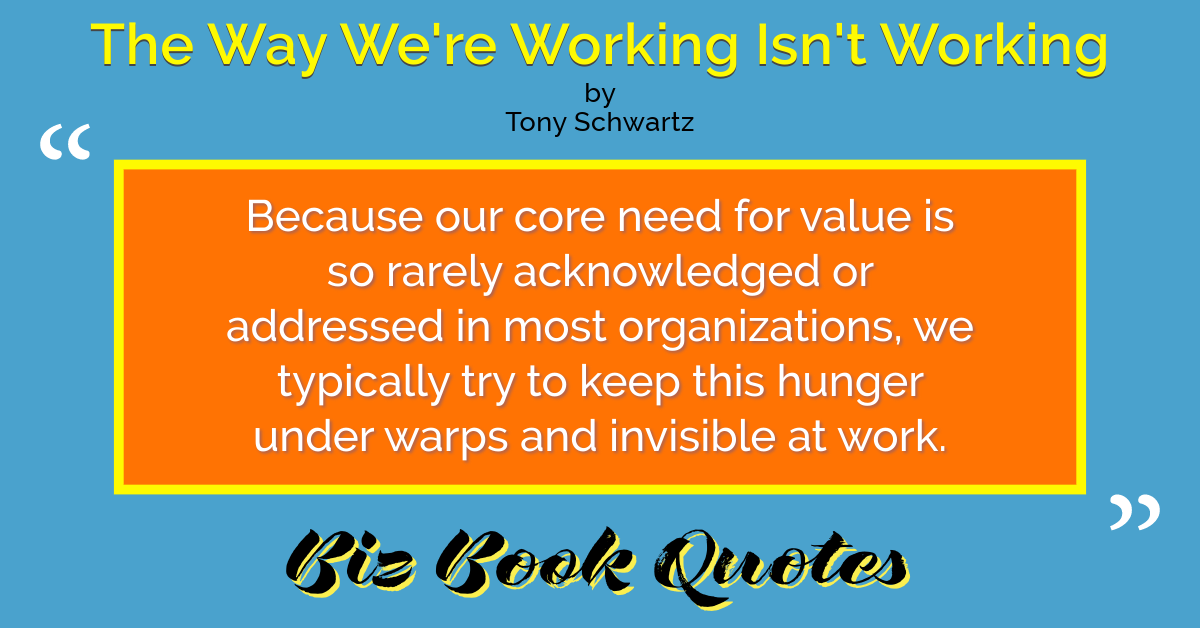 |
Because our core need for value is so rarely acknowledged or addressed in most organizations, we typically try to keep this hunger under warps and invisible at work.
|
143 |
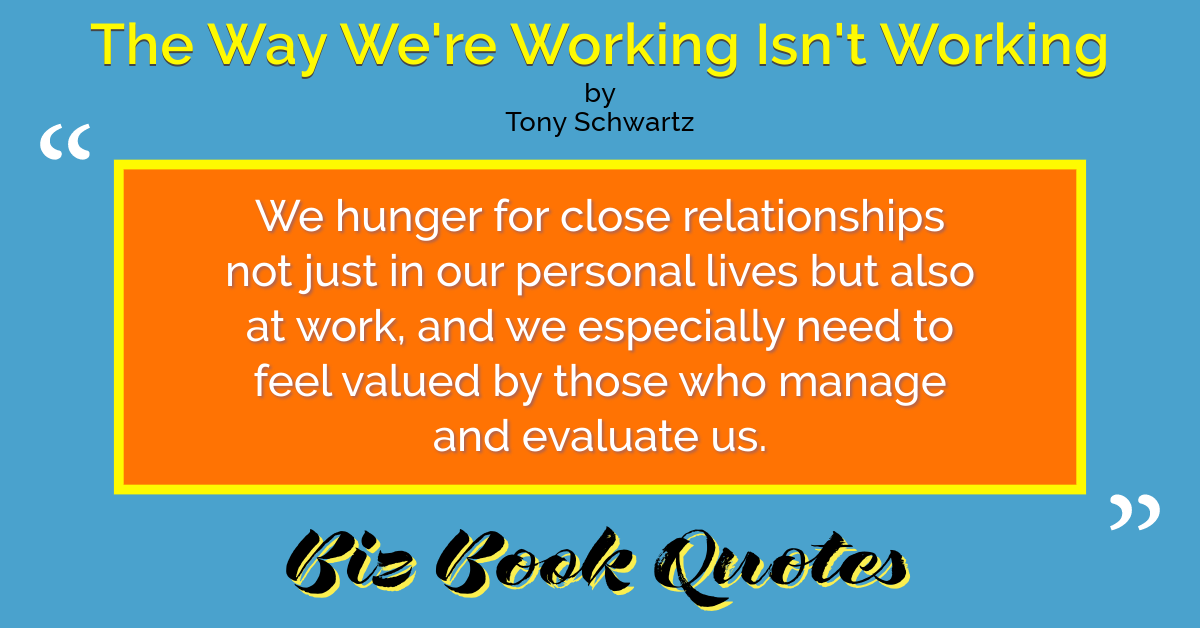 |
We hunger for close relationships not just in our personal lives but also at work, and we especially need to feel valued by those who manage and evaluate us.
|
167 |
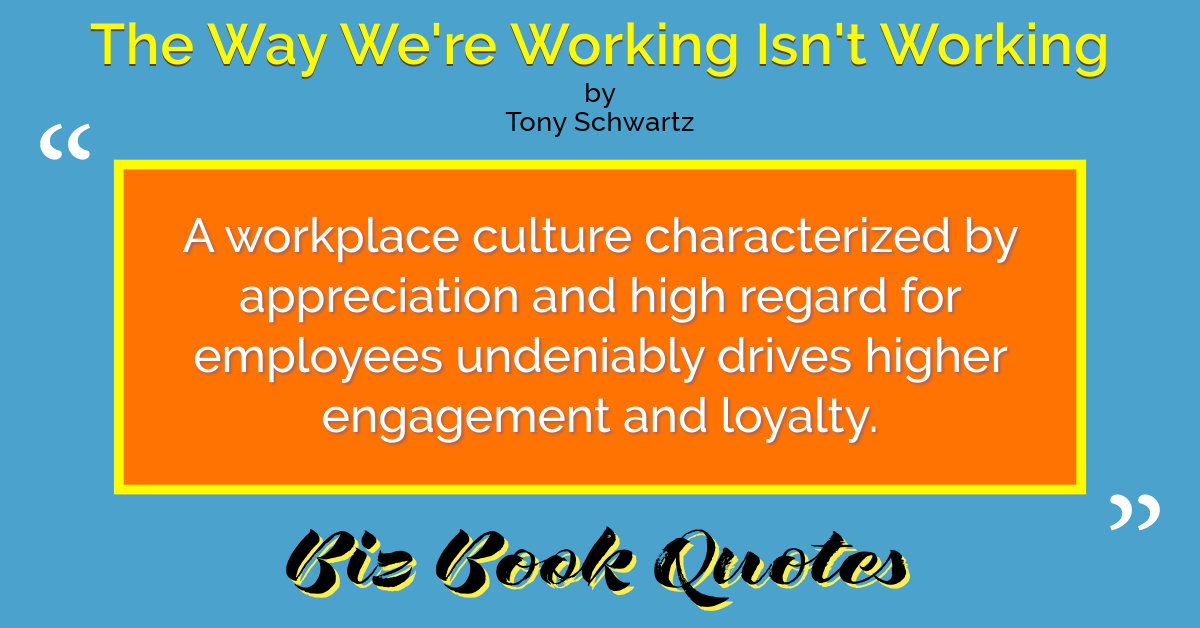 |
A workplace culture characterized by appreciation and high regard for employees undeniably drives higher engagement and loyalty.
|
169 |
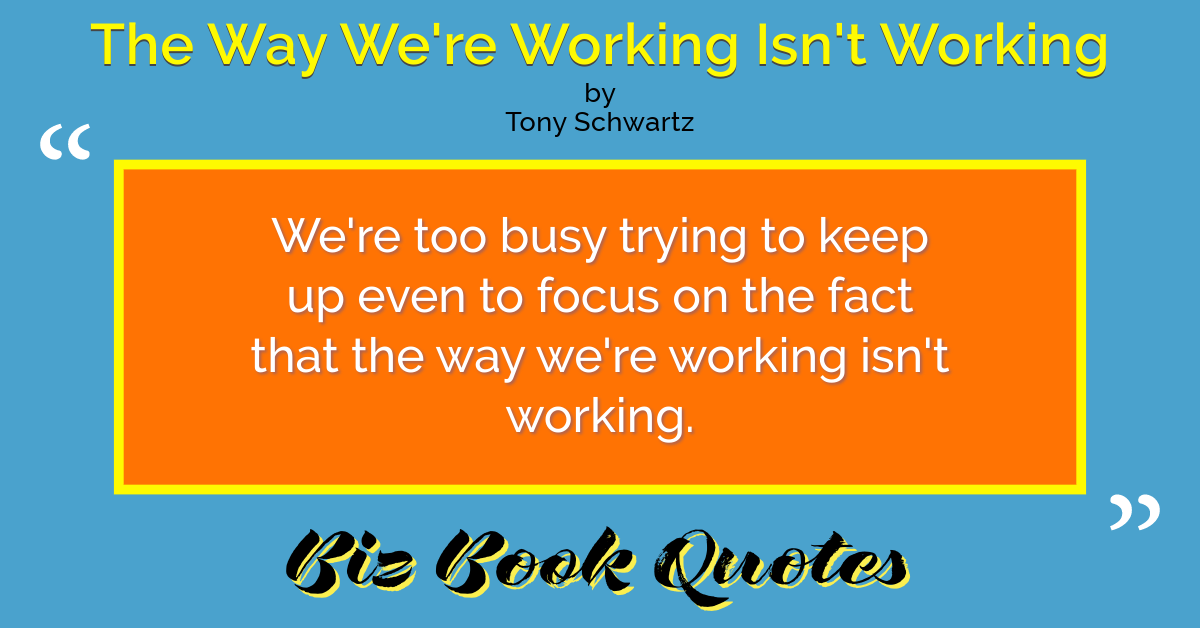 |
We’re too busy t trying to keep up even to focus on the fact that the way we’re working isn’t working.
|
179 |
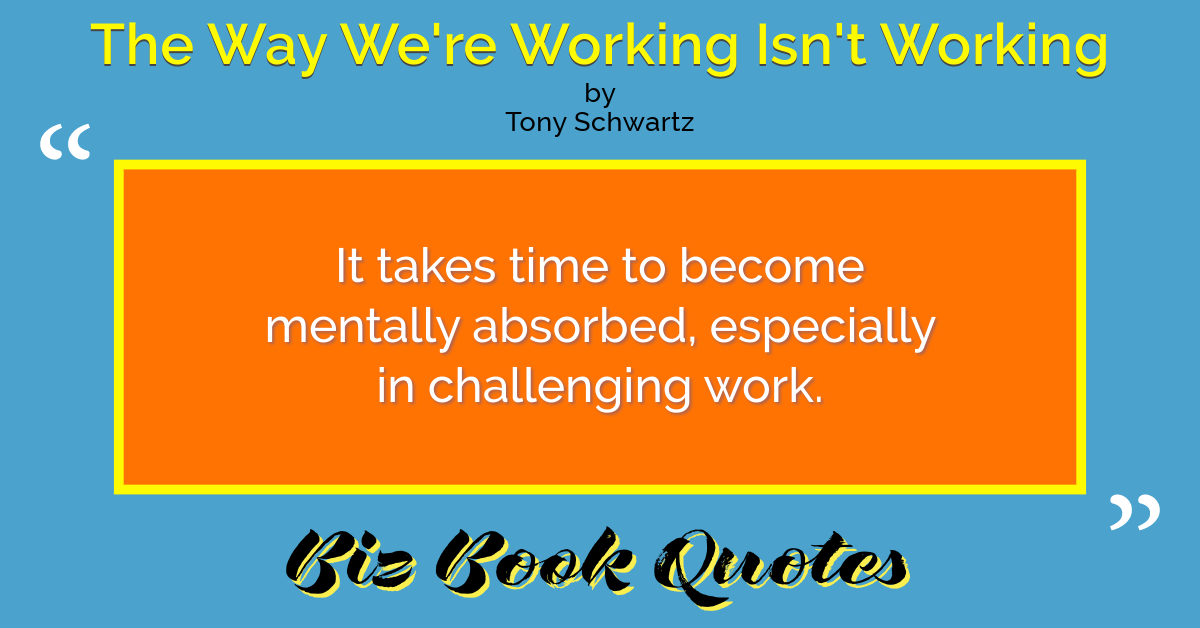 |
It takes time to become mentally absorbed, especially in challenging work.
|
197 |
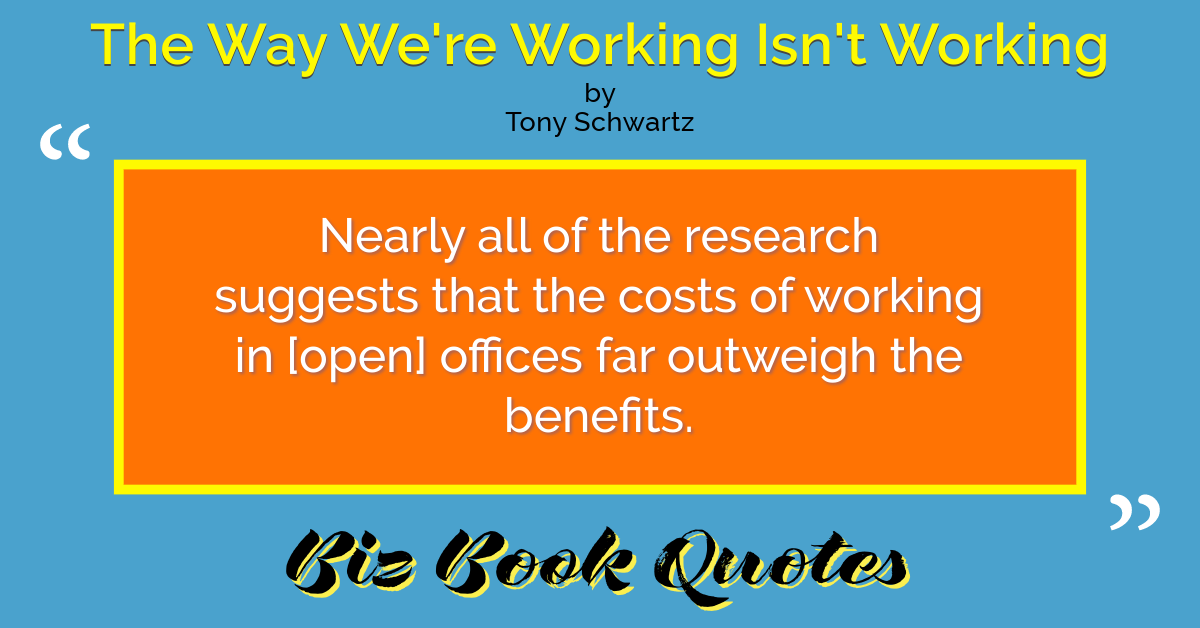 |
Nearly all of the research suggests that the costs of working in [open] offices far outweigh the benefits.
|
224 |
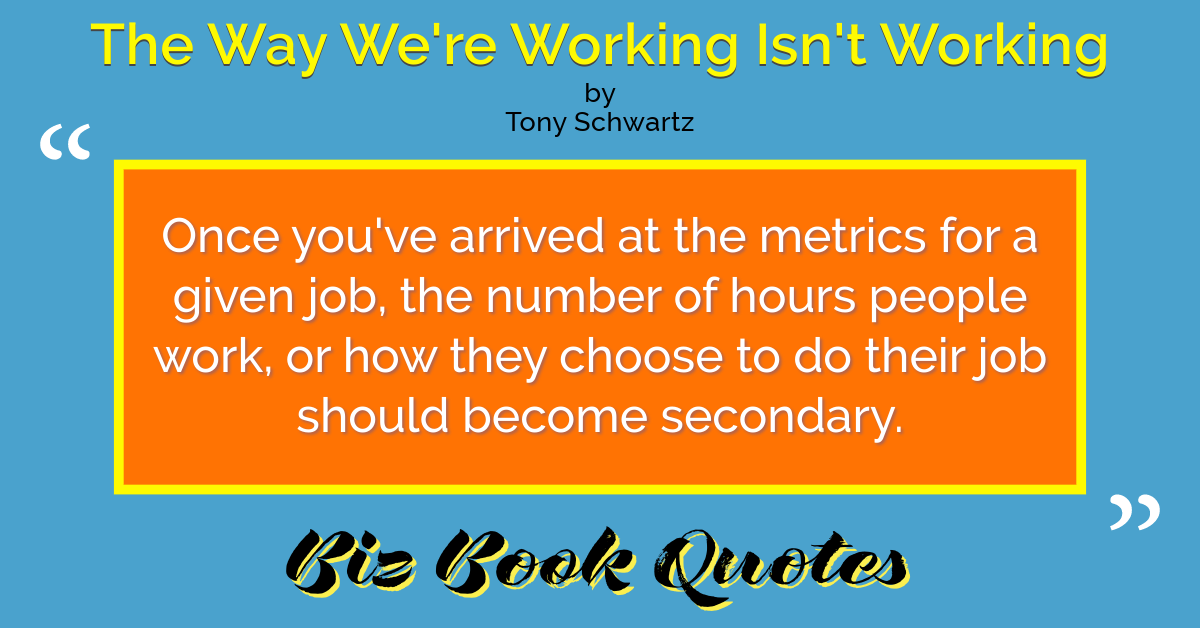 |
Once you’ve arrived at the metrics for a given job, the number of hours people work, or how they choose to do their job should become secondary.
|
229 |